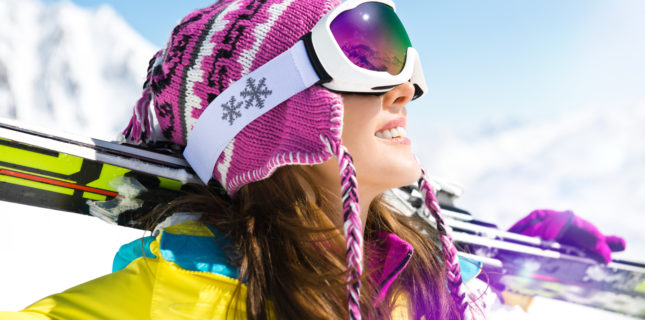
Winter Weather + Blue Light Exposure
As the days get shorter this winter and the temperatures lower, patients think they don’t need to protect their eyes from outdoor UV and blue light exposure anymore. Wrong!
Tip: Tell patients that if they’re taking photosensitizing medications, the surface of the eye can be sunburned 3x faster than if they’re not.
THE BASICS
Here is some of the basic info they should know about UV and blue light:
- WHAT. Blue light is usually pinpointed at between 400nm and 500nm, with the most damaging to the macula at around 460nm.
- HOW. Both coatings and materials have been launched that either filter or block specific wavelengths.
- WHY. Protecting eyes from the sun is just as important in the winter as during the summer. We’ll bet your patients don’t know that, during winter, the sun sits lower and at an angle that delivers more exposure than in the summer.
WHAT ELSE?
UP, UP AND… Partly because the air gets thinner at higher altitudes, exposure to UV radiation rises almost 5% every 1,000 feet above sea level. What does that mean if a patient is, for example, skiing at 10,000 feet? As explained at skincancer.org, “At that altitude, UV radiation may be 35 to 45% more intense than at sea level.”
REFLECT ON THIS. Why can winter cause more eye damage than a sunny summer? One reason…reflections. In the summer, green grass and trees reflect less than 7% of light. According to The Vision Council, because snow is so reflective, up to 85% of UV rays from the sun are reflected upward from it.
DON’T BE A PILL. Be sure to ask what photosensitizing medications patients are taking. If, for example, someone is taking diuretics or sulfa antibiotics, they are likely to suffer sunburn to the surface of the eye at least three times faster than someone who is not on those drugs.
- CHILD PLAY. Kids spend more time outside than adults. Also, the natural lens hasn’t fully developed in children. Those are two reasons that 80% of an individual’s lifetime exposure to UV occurs before age 18.
- POST-CATARACT PEEPS. Though most newer IOLs have built-in UV protection, many older implants do not.
So, whether your patient is over 60, under 10, or anywhere in between, they need to understand that protecting their eyes in winter’s wonderland is imperative.
Do you tell patients in your practice about the year-round dangers of UV and blue light? If so, do you discuss it in the exam room or in the dispensary. Tell us how you handle it and share in our Facebook conversation here.
Comments are closed.







